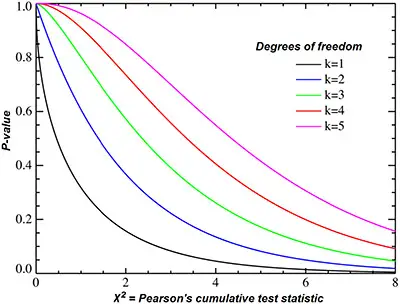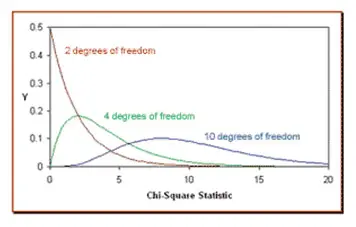T-Statistic and Degrees of Freedom Calculator
Use this free calculator to generate the t-statistic and degrees of freedom for a Student t-test. Enter the sample mean, the hypothesized mean,the sample size, and the sample standard deviation.
Please input numbers in the required fields and click CALCULATE.
T-Statistic and Degrees of Freedom Formula
x – sample mean, μ – hypothesized mean, s – sample standard deviation, n – sample size, df – degrees of freedom.
One of the most important concepts when you are studying statistics is related to degrees of confidence. So, we wanted to ensure that you don’t have any difficulties when you need to calculate them. So, you can use our free degrees of freedom calculator above. However, if you want to know a bit more about the degrees of freedom, just keep reading.
What Are Degrees Of Freedom?
Simply put, degrees of freedom of an estimate is the number of independent pieces of information that go into calculating an estimate.
So, when you need to calculate the degrees of freedom, you can simply use our degrees of freedom calculator or, if you prefer, you can calculate it manually. All you need to know is that in order to calculate the degrees of freedom (df) you just need to subtract 1 from the number of items.

Let’s see a practical example. Imagine that you are trying to discover the mean weight loss for a specific diet. Let’s imagine that you use a sample of 4 people. In this case, you will have 3 degrees of freedom:
df = n – 1
df = 4 – 1
df = 3
In case you want to use 50 people, then you would have 49 degrees of freedom (df = 50 – 1 = 49).
Why Do We Need To Subtract 1 From The Number Of Items?
One of the questions that many statistics students do is why we need to subtract 1 from the number of items. So, let’s think about the degrees of freedom from a different perspective. Imagine that you look at the degrees of freedom as the number of values that are free to vary in a data set. But what does this mean?

Suppose that you are asked to pick a set of numbers that have a mean or average of 10. Some sets that you will immediately think of can be 9, 10, 11 or 8, 10, 12 or 5, 10, 15.
If you take a closer look at each one of these sets, you will notice that as soon as you choose the first two numbers in a set, the third number will be fixed. So, this means that you just can’t choose the third value in the set. So, you will be able to pick 9 + 10 or 5 + 15, for example. However, as soon as you pick them, you will know that the degrees of freedom for a set of three numbers is two.
Degrees Of Freedom – Two Samples

So, how should you proceed if you want to determine the degrees of freedom when you have two samples? It is important to notice that you can also use our free df calculator above. However, if you want to understand how to do it manually, then you need to ensure that you first find a parameter such as the mean, for example. So, this means that you will have not one but two n’s to consider (sample 1 and sample 2).
So, when you have two samples, the formula to determine the degrees of freedom is:
Degrees of Freedom (Two Samples) = (N1 + N2) -2
Just make sure to use our df calculator to confirm your results.